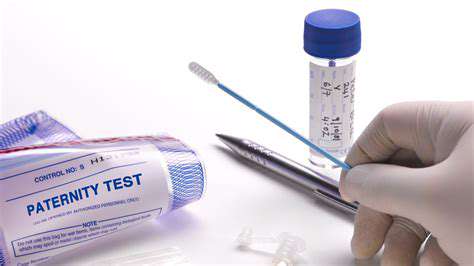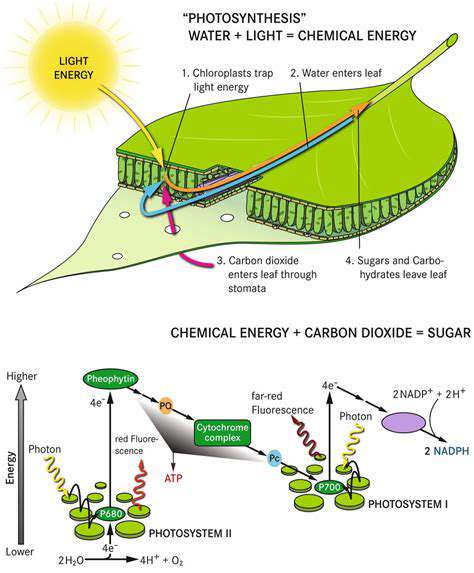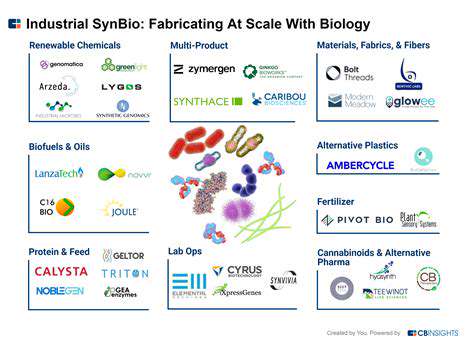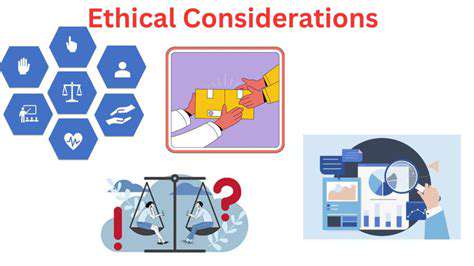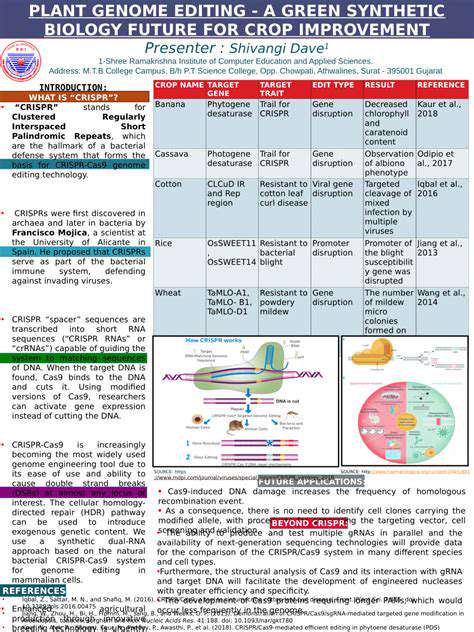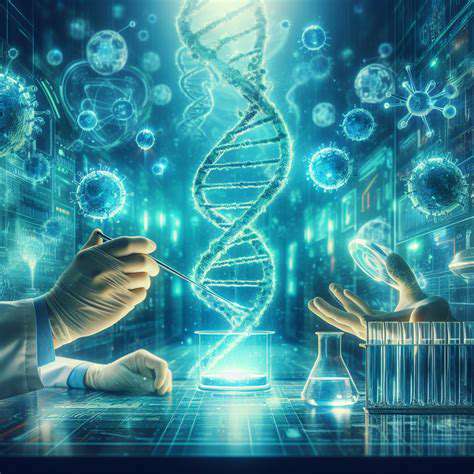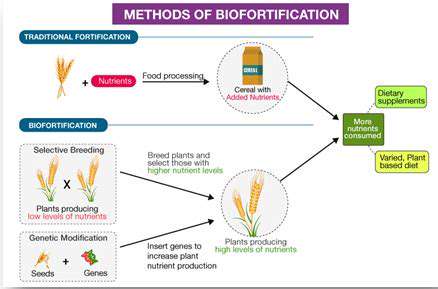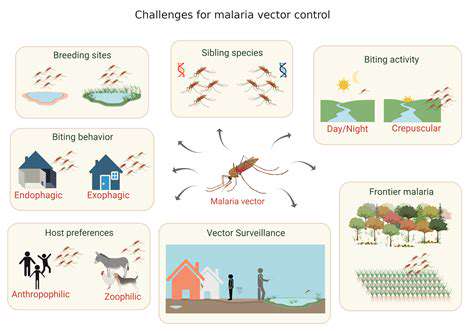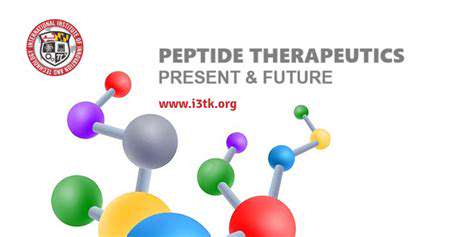Understanding the Fundamentals of DNA
At the heart of every living organism lies deoxyribonucleic acid, commonly known as DNA. This intricate molecule serves as the blueprint for life, encoding the instructions necessary for growth, development, and reproduction. To truly grasp how forensic paternity testing works, one must first appreciate the elegant simplicity of DNA's double helix structure. Composed of four distinct nitrogenous bases - adenine, guanine, cytosine, and thymine - this molecular structure creates a unique genetic fingerprint for every individual.
The Role of STRs in DNA Profiling
Short Tandem Repeats (STRs) represent specific segments of DNA that repeat in a consecutive pattern. What makes these sequences particularly valuable for forensic applications is their remarkable variability between individuals. The number of repetitions at specific chromosomal locations can differ significantly from person to person, creating a distinctive genetic signature. This variation forms the cornerstone of modern DNA profiling techniques, enabling forensic experts to distinguish individuals with remarkable precision.
Collecting and Preparing DNA Samples
The reliability of forensic paternity testing depends heavily on proper sample collection and preparation. Common collection methods include buccal swabs (from the inner cheek), blood samples, or hair follicles containing root cells. Strict adherence to collection protocols is essential to prevent contamination and preserve DNA integrity. Once collected, samples undergo careful laboratory processing to isolate the DNA, ensuring optimal quality for subsequent analysis.
The Process of DNA Amplification
Polymerase chain reaction (PCR) represents a revolutionary technique that allows scientists to amplify specific STR regions exponentially. This process can generate millions of DNA copies from minute initial samples, making even trace amounts of genetic material usable for analysis. PCR's ability to amplify DNA has transformed forensic science, enabling accurate testing from increasingly smaller samples.
Comparing STR Profiles Across Individuals
After obtaining STR profiles from all test participants, forensic analysts conduct detailed comparisons. Each person's profile consists of numerical values representing repeat counts at specific STR locations. By examining the child's profile alongside those of the alleged father and mother, scientists can determine biological relationships with statistical certainty. Sophisticated calculations then establish the probability of the observed matches occurring by random chance.
Interpreting the Results of DNA Analysis
Result interpretation requires careful statistical analysis and contextual understanding. Forensic experts meticulously compare STR profiles while considering the population frequency of each genetic marker. This rigorous approach yields definitive conclusions about biological relationships, supported by mathematical probabilities. The process ensures scientifically valid results that can withstand legal scrutiny.
Ethical Considerations in Forensic Paternity Testing
While DNA testing offers powerful tools for establishing paternity, it raises significant ethical questions. Protecting the confidentiality of sensitive genetic information remains paramount, as does considering the potential impact on families. Ethical guidelines and legal standards help ensure responsible application of this technology in forensic investigations.
Beyond STRs: Expanding the Scope of Paternity Testing
Expanding Genetic Markers for Enhanced Accuracy
While STR analysis forms the backbone of traditional paternity testing, modern approaches incorporate additional genetic markers for improved accuracy. Single nucleotide polymorphisms (SNPs) and mitochondrial DNA (mtDNA) now supplement STR analysis, particularly in complex cases. This multi-marker approach significantly reduces the likelihood of ambiguous results while enhancing overall test reliability.
Utilizing Next-Generation Sequencing (NGS) for Comprehensive Analysis
Next-generation sequencing technologies have transformed genetic analysis by enabling simultaneous examination of millions of DNA fragments. NGS provides unprecedented detail, revealing subtle genetic variations that traditional methods might miss. This capability proves especially valuable when working with degraded or limited DNA samples. Moreover, NGS facilitates the discovery of novel genetic markers that may further refine future testing protocols.
Improving Accuracy and Efficiency in Complex Cases
Modern techniques address challenges in complex paternity cases involving multiple potential fathers or compromised samples. The combination of advanced genetic markers with sophisticated analytical methods delivers both greater accuracy and faster results. This improvement proves particularly valuable in time-sensitive legal situations where establishing parentage is critical.
Ethical Considerations and Implications
As testing capabilities expand, ethical considerations grow more complex. Robust regulations must balance technological advances with privacy protections and prevent potential misuse of genetic information. Ongoing dialogue among stakeholders helps ensure responsible development and application of these powerful tools.
The Role of Next-Generation Sequencing (NGS) in Precision Paternity Testing
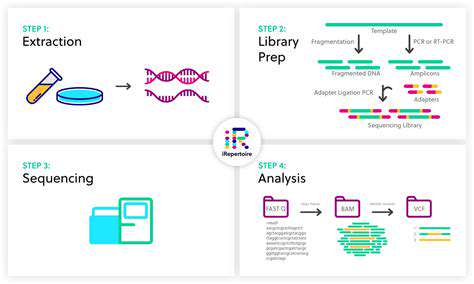
The Advancements in Sequencing Technology
Next-generation sequencing has transformed biological research by dramatically reducing sequencing costs and time requirements. This breakthrough enables scientists to explore genetic systems with unprecedented depth and precision. The implications extend across multiple scientific disciplines, from medicine to environmental studies.
Applications in Medical Diagnostics
NGS plays a pivotal role in identifying genetic disorders and disease-causing mutations. Its ability to rapidly analyze entire genomes revolutionizes diagnostic capabilities, particularly for rare conditions and complex diseases. This technology also supports the growing field of personalized medicine by enabling treatments tailored to individual genetic profiles.
Genomic Research and Understanding
By analyzing extensive genomic datasets, researchers gain new insights into evolutionary biology and disease mechanisms. Comparative genomic studies benefit enormously from NGS capabilities, revealing conserved genetic elements across species.
Agricultural Applications
NGS accelerates agricultural improvements by identifying desirable traits in crops and livestock. This technology supports the development of more productive, nutritious, and resilient agricultural products.
Environmental Monitoring and Conservation
Environmental scientists employ NGS to study microbial ecosystems and track biodiversity. These applications provide critical data for conservation efforts and environmental protection strategies.
Pharmaceutical Development and Drug Discovery
The pharmaceutical industry leverages NGS to identify therapeutic targets and develop personalized treatments. This approach leads to more effective medications with reduced side effects.
Ethical Considerations and Challenges
While NGS offers tremendous potential, it also presents ethical challenges regarding data privacy and equitable access. Responsible implementation requires careful consideration of these issues to maintain public trust.
Addressing Challenges and Ensuring Accuracy in Paternity Testing
Ensuring Accuracy Through Advanced Techniques
Modern paternity testing benefits significantly from technological advancements in genetic analysis. The combination of PCR amplification and STR analysis provides highly sensitive and specific results. Analyzing multiple genetic markers strengthens statistical confidence in paternity determinations. Rigorous laboratory protocols and quality control measures further enhance result reliability.
Addressing Ethical Considerations in Paternity Testing
The powerful capabilities of DNA testing require equally robust ethical safeguards. Protecting participant confidentiality and ensuring informed consent remain fundamental principles. The potential emotional impact of test results necessitates appropriate support systems and counseling resources.
The Role of Biotechnology in Legal Applications
In legal contexts, DNA testing provides objective, scientifically valid evidence for paternity determinations. These methods bring clarity to complex legal situations while maintaining high standards of accuracy and reliability. The integration of biotechnology into legal processes strengthens the administration of justice in paternity-related cases.
